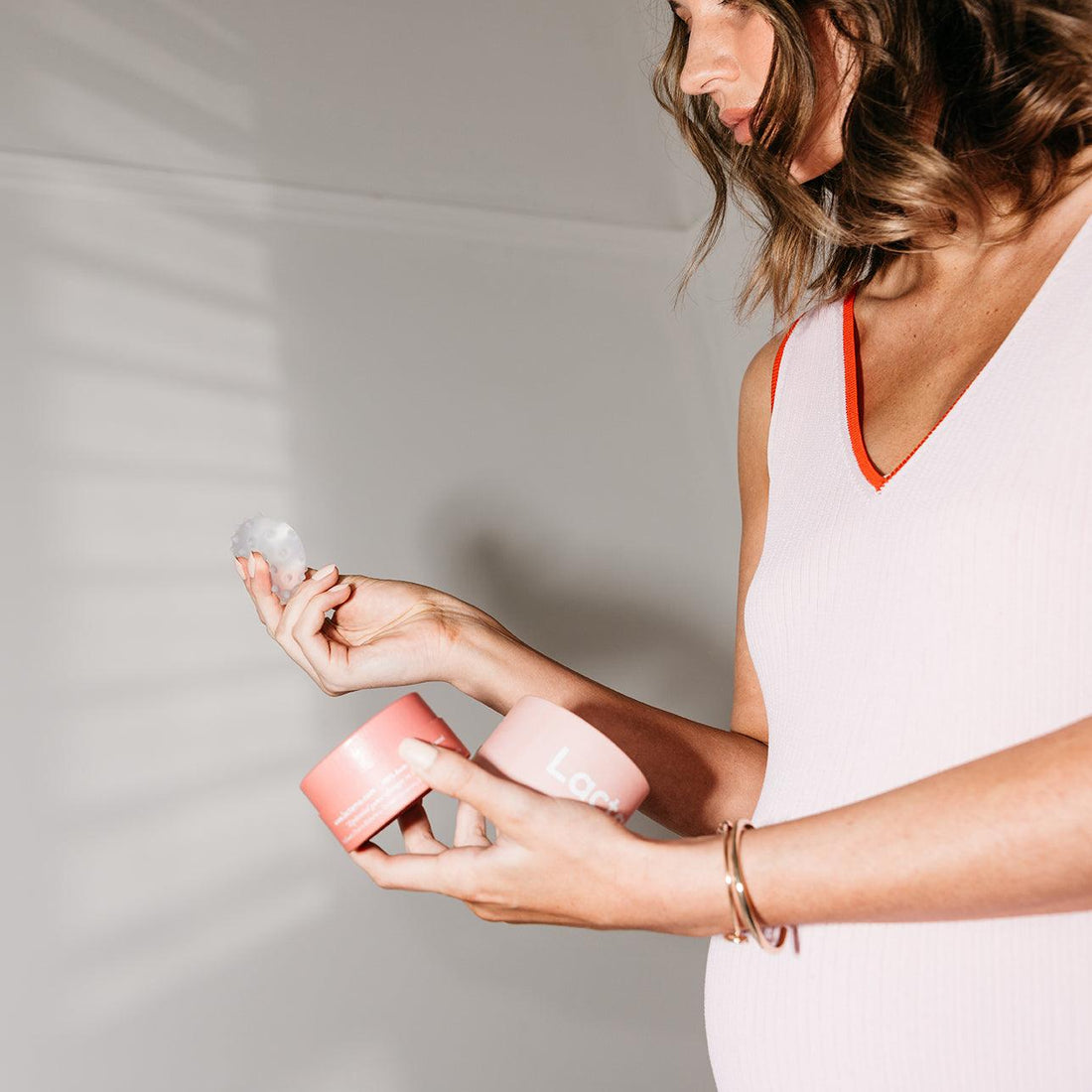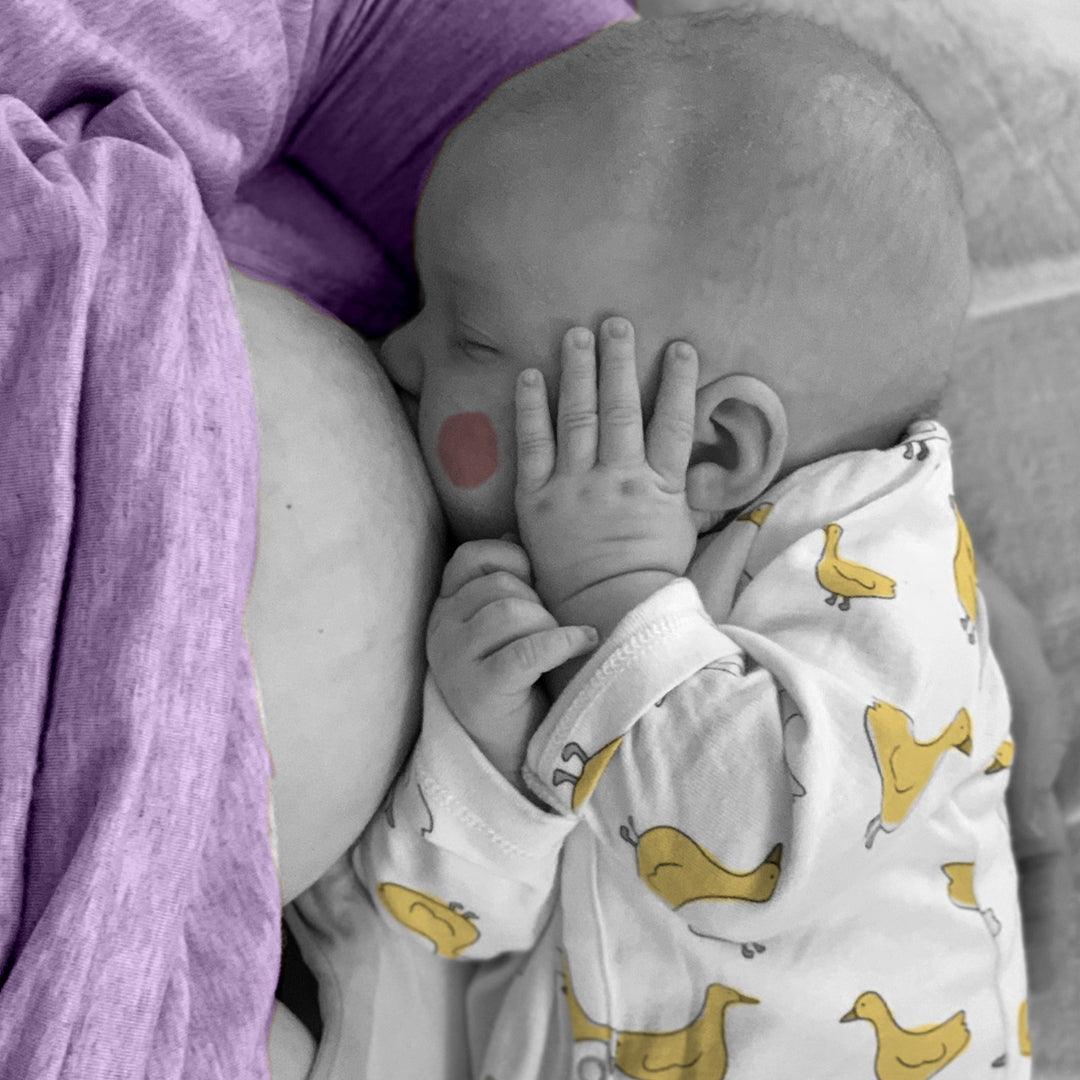

Yep, even the weird ones.
In parenting, there are no silly questions. There’s so much you don’t know until you’re in it, and no subject more so than breastfeeding. Yes it may be “natural”, but that doesn’t make it easy — it’s still a learned skill. So, we’ve rounded up some of your most—asked questions and enlisted the expertise of Joelleen Winduss Paye, Holistic International Board Certified Lactation Consultant (IBCLC), Midwife & Naturopath to answer them all for you.
What does it feel like?
Real talk: it feels…weird. Not like anything you’ve experienced before, and you might be shocked at how much sucking power your tiny little human has! Joelleen says, “You will be looking for a sucking/vacuum feeling and strong tugging/pulling sensations.” And yes, it may take a bit for you to get used to this new feeling in your body.
How much nipple soreness is normal?
It’s likely that you — and your nipples — have never experienced anything like this before, and with the constant use some roughness and dryness is to be expected, especially as you find your groove. In the initial stage when the baby draws the nipple deeper into their mouth the vacuum created from their sucking can also cause tenderness, which will resolve with time. Joelleen says “More intense discomfort can occur when a baby sucks strongly in the first few days before the milk volume has increased, this is normal, and the baby’s suck will relax a little when the milk is flowing more abundantly.” She also notes that it can differ with each breast. However, if you notice flaking or scaly skin or a yellow crust, speak to your medical support team to have this assessed.
It’s sore when my baby latches: what do I do?
“Review your breastfeeding technique — it’s most likely what’s causing discomfort,” says Joelleen. “Using the cradle hold and focusing on how your baby’s face contacts your breast has been shown to reduce pain compared with the cross-cradle hold and lifting/shaping your breast into your baby’s mouth.” The first step is to know what you’re looking for and what the right hold feels like, then making micro movements in both your baby’s position and your body in order to get it right. If the micro movements provide some relief, you’re on your way to the optimal fit. If they don’t, try moving your baby in a different direction.
What’s a shallow latch?
Joelleen explains, “When the nipple is shallow in the baby’s mouth, compression between the baby’s gums and hard palate can lead to discomfort. If the nipple doesn’t travel further into the baby’s mouth where there is a softer roomier space, nipple pain can occur.” This is also a sign that your hold and position need some fine-tuning, but it can be helped! Here’s how to tell if you have a shallow latch: “Check the shape of your nipple immediately after your baby comes off the breast. It should be rounded at the tip and a little longer/stretched from the suction, essentially not much change from before the breastfeed began.” Joelleen says. If the tip is flattened, ridged or has a lipstick shape, it’s indicative of a shallow latch as it’s been compressed.
What is one thing everyone should know about breastfeeding?
Joelleen says early education about breastfeeding techniques — that is before the baby is born — is absolutely key; especially knowing what breastfeeding positions are available to you so that you don’t get despondent when one “isn’t working”. “The cross-cradle hold that’s commonly taught in hospitals has been shown to increase in nipple pain, and it undermines a mother's and baby’s instincts,” says Joelleen. She recommends also trying cradle hold or side-lying feeding positions where the focus is on having your baby’s mouth opposite the nipple with their cheeks symmetrically pressed in, their chin buried into the breast and their nose flush. “Positioning your baby in this way will allow them to suck the nipple deep into their mouth, maximising your chances of comfort during breastfeeding.”
What’s a flange?
Good question, because before you’re in this world, it’s something that you would have no idea about, or even knew it had a name. A flange is the plastic or silicone attachment part of your pump that fits around your nipple. It may seem innocuous but knowing what flange size fits your nipple the best is super important. “One that is too large and pulls the areola in during pumping and combined with strong suction, this can lead to breast inflammation and nipple/areola shape change,” says Joelleen.
Watch our video with Joelleen on how to fit a breastpump here.
What does a correct latch look like?
According to Joelleen, this is actually a three-part equation and there is an optimal positioning for each:
Mother: Body should be well supported in a semi-reclined cradle hold or side-lying breastfeeding position. Baby’s body: Your baby’s entire body should be facing towards your torso, with their spine and head aligned. In the reclined position, your baby’s body maintains contact with your torso and belly, and its hips can be tucked firmly into the opposite breast or have a slight downward tilt across your torso, depending on what feels comfiest for the mother. Baby’s face: It should be positioned over the breast so that their mouth is directly opposite the nipple; their chin is buried into the breast. When latched their cheeks should be symmetrically pressed into the breast, their nose flush with the breast and the mother can look for signs of breathing such as sucking, the sound of exhale and the rise and fall of their chest.
Watch our video with Joelleen on latch here.
How do I feed side-lying?
“When a mother rests in a side-lying position, we want one pillow to support her neck and head and pillows to help her hips and knees maintain alignment,” says Joelleen. “A pillow should support the lower back, and a pillow on either side of the mother's body, one to support her elbow from the arm she is holding the baby with and the other to support her baby’s feet and legs,” she says.
Watch our video with Joelleen on four breastfeeding positions to try here.
What is paced bottle feeding?
This technique is one that Joelleen believes every parent should know as it helps you prepare for a successful bottle-feed, if (or when) you may need it. “This method is based on how the bottle and baby are positioned to allow your baby to drink at their own pace, and take breaks as they please” says Joelleen. Here’s what to do:
- Keep your baby well supported (behind the neck and shoulders) and upright, the bottle horizontal. This removes gravity from the equation and, most importantly, lets your baby rest when they wish.
- Rest the tip of the teat on your baby's lips. Wait for them to invite the bottle into their mouth, your baby will take the teat when ready.
- When it starts to suck, tilt the bottle to a horizontal angle (parallel to the floor). The teat will be about half filled with milk.
- Let baby continue to suck until they take a natural pause.
- Tilt the base of the bottle downwards, still keeping the teat in their mouth.
- Let baby have a little rest, then repeat until your baby has finished.
Watch our video with Joelleen on how to introduce a bottle to your baby here.
Does the food I eat impact my supply?
According to Joelleen, although milk volume is largely dictated by supply and demand (as in: it increases the more you feed and express), nutrition does have a large role to play. “The demands of producing breast milk on a mother’s body have been likened to that of a professional athlete, and it is estimated that a breastfeeding mother requires an additional 300-500 calories per day,” she says. This equates to a whole extra meal or three balanced snacks. Balance is key in all your meals for hormonal balance and consistent energy. “Much of the current knowledge around food and lactation supply is ancestral and anecdotal. Aim for foods that make you feel satiated and fill you with energy and have a protein-rich breakfast as soon as you wake up is a great way to get off on the best foot at the start of the day.”
Also, it’s worth nothing that there are certain things that can reduce supply including alcohol (according to this study), and dehydration. “Breast milk is over 80% water, which is also required to produce breast milk. Therefore staying adequately hydrated is important and a simple way to support breast milk supply,” says Joelleen.
For more information on breastfeeding, watch our tutorials with Joelleen here.














































































































